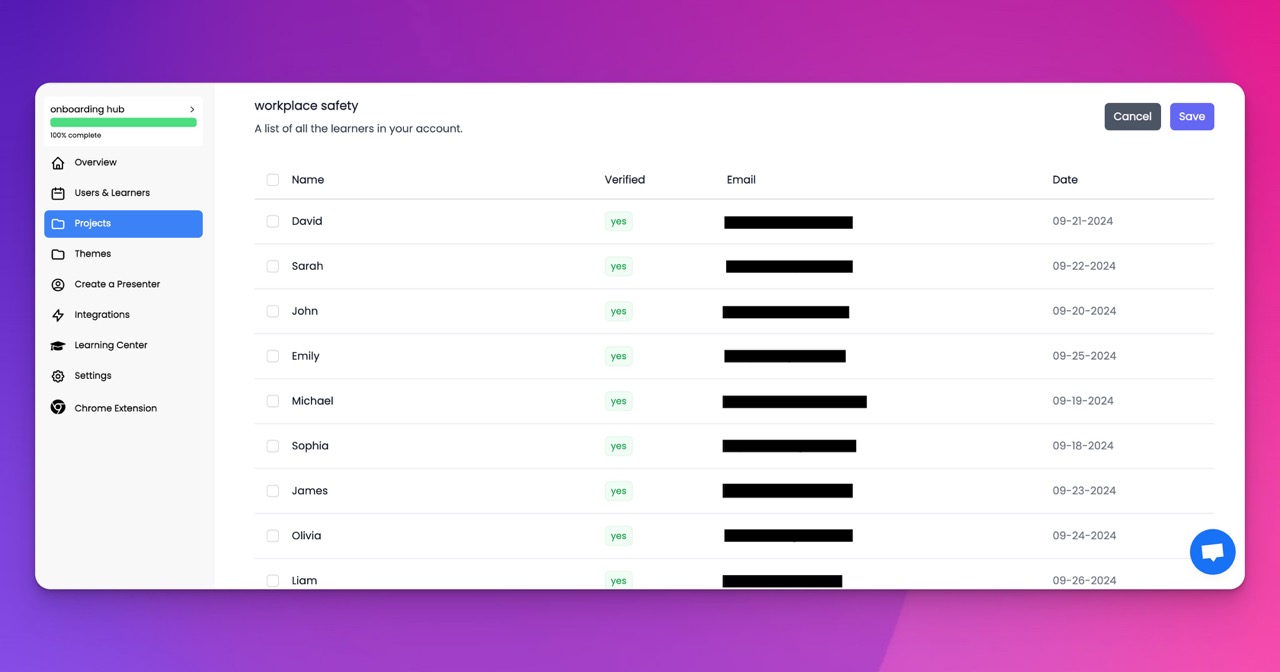🎉 Trainday now integrates with Zendesk and Hubspot 🎉 Trainday now integrates with Zendesk and Hubspot 🎉 Trainday now integrates with Zendesk and Hubspot
🎉 Trainday now integrates with Zendesk and Hubspot
🎉 Trainday now integrates with Zendesk and Hubspot
Contact
Higher Education
Dynamic Employee Training Solutions in Higher Education
Leveraging Data and Artificial Intelligence for Dynamic Employee Training Solutions in Higher Education
In today's fast-paced world, the need for continuous learning and upskilling has become crucial, especially in higher education institutions. As technology evolves rapidly, employee training programs must adapt to meet the demands of an ever-changing landscape. This blog post explores how data and artificial intelligence (AI) can be harnessed to create relevant employee training courses efficiently, enabling higher education institutions to stay ahead.
1. The Power of Data in Employee Training:
Data plays a pivotal role in shaping effective employee training solutions. By analyzing historical employee performance data, learning and development teams can identify skill gaps and areas that require improvement. Additionally, data can help determine the most effective training methods, content, and delivery formats. This enables institutions to tailor training programs to individual employee needs and optimize their overall effectiveness.
2. Harnessing AI for Training Course Development:
Artificial intelligence brings a new dimension to employee training by automating the creation of relevant and engaging courses. AI algorithms can analyze vast amounts of data to identify emerging trends, industry-specific skills, and future job requirements. This allows institutions to design training courses that align with market demands and equip employees with the skills they need to succeed.
3. Personalized Training Programs:
One-size-fits-all training programs are no longer sufficient in the dynamic higher education landscape. By leveraging AI, institutions can create personalized training paths for employees based on their individual strengths, weaknesses, and career goals. AI algorithms can recommend specific courses, modules, or learning resources to address each employee's unique needs. This personalized approach enhances engagement, motivation, and ultimately, the effectiveness of training programs.
4. Real-time Feedback and Adaptation:
Data-driven employee training programs enable real-time feedback loops. Through AI-powered analytics, institutions can track employee progress, identify areas of improvement, and provide targeted feedback. This feedback loop allows for continuous adaptation and refinement of training courses, ensuring that employees receive the most relevant and up-to-date content.
5. Efficient Course Development and Delivery:
The use of data and AI expedites the course development process. By automating the analysis of industry trends, job market demands, and employee performance data, institutions can rapidly create training courses that address emerging needs. This agility is critical in fast-paced industries where skills become outdated quickly. Moreover, AI can facilitate the delivery of training through various formats, such as interactive e-learning modules, virtual reality simulations, or even AI-powered chatbots for on-demand learning support.
Conclusion:
Incorporating data and artificial intelligence into employee training solutions revolutionizes the way higher education institutions equip their staff with relevant skills. By leveraging these technologies, institutions can create personalized, efficient, and dynamic training courses that adapt to industry demands in record time. The combination of data-driven insights and AI-powered tools enables institutions to stay ahead of the curve, fostering continuous learning and development within their workforce. Embracing these innovative approaches will empower employees to thrive in a rapidly evolving higher education landscape.
Accelerate Compliance.
Deliver OSHA-Ready Courses Instantly.
Empower your team with data-driven training solutions tailored to your industry's safety standards. Stay compliant, reduce risks, and boost productivity with AI-powered course creation.
